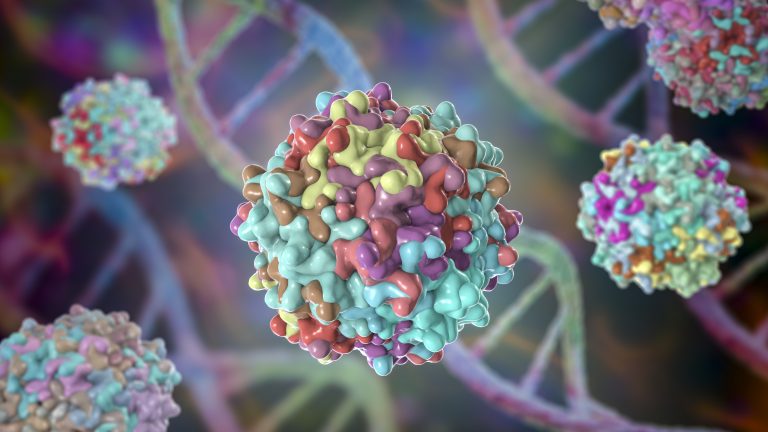Filters
Host (768597)
Bovine (1090)Canine (20)Cat (408)Chicken (1642)Cod (2)Cow (333)Crab (15)Dog (524)Dolphin (2)Duck (13)E Coli (239129)Equine (7)Feline (1864)Ferret (306)Fish (125)Frog (55)Goat (36847)Guinea Pig (752)Hamster (1376)Horse (903)Insect (2053)Mammalian (512)Mice (6)Monkey (601)Mouse (96266)Pig (197)Porcine (70)Rabbit (358709)Rat (11723)Ray (55)Salamander (4)Salmon (15)Shark (3)Sheep (4247)Snake (4)Swine (301)Turkey (57)Whale (3)Yeast (5336)Zebrafish (3022)Isotype (156643)
IgA (13624)IgA1 (941)IgA2 (318)IgD (1949)IgE (5594)IgG (87187)IgG1 (16733)IgG2 (1329)IgG3 (2719)IgG4 (1689)IgM (22029)IgY (2531)Label (239340)
AF488 (2465)AF594 (662)AF647 (2324)ALEXA (11546)ALEXA FLUOR 350 (255)ALEXA FLUOR 405 (260)ALEXA FLUOR 488 (672)ALEXA FLUOR 532 (260)ALEXA FLUOR 555 (274)ALEXA FLUOR 568 (253)ALEXA FLUOR 594 (299)ALEXA FLUOR 633 (262)ALEXA FLUOR 647 (607)ALEXA FLUOR 660 (252)ALEXA FLUOR 680 (422)ALEXA FLUOR 700 (2)ALEXA FLUOR 750 (414)ALEXA FLUOR 790 (215)Alkaline Phosphatase (825)Allophycocyanin (32)ALP (387)AMCA (80)AP (1160)APC (15217)APC C750 (13)Apc Cy7 (1248)ATTO 390 (3)ATTO 488 (6)ATTO 550 (1)ATTO 594 (5)ATTO 647N (4)AVI (53)Beads (225)Beta Gal (2)BgG (1)BIMA (6)Biotin (27817)Biotinylated (1810)Blue (708)BSA (878)BTG (46)C Terminal (688)CF Blue (19)Colloidal (22)Conjugated (29246)Cy (163)Cy3 (390)Cy5 (2041)Cy5 5 (2469)Cy5 PE (1)Cy7 (3638)Dual (170)DY549 (3)DY649 (3)Dye (1)DyLight (1430)DyLight 405 (7)DyLight 488 (216)DyLight 549 (17)DyLight 594 (84)DyLight 649 (3)DyLight 650 (35)DyLight 680 (17)DyLight 800 (21)Fam (5)Fc Tag (8)FITC (30165)Flag (208)Fluorescent (146)GFP (563)GFP Tag (164)Glucose Oxidase (59)Gold (511)Green (580)GST (711)GST Tag (315)HA Tag (430)His (619)His Tag (492)Horseradish (550)HRP (12960)HSA (249)iFluor (16571)Isoform b (31)KLH (88)Luciferase (105)Magnetic (254)MBP (338)MBP Tag (87)Myc Tag (398)OC 515 (1)Orange (78)OVA (104)Pacific Blue (213)Particle (64)PE (33571)PerCP (8438)Peroxidase (1380)POD (11)Poly Hrp (92)Poly Hrp40 (13)Poly Hrp80 (3)Puro (32)Red (2440)RFP Tag (63)Rhodamine (607)RPE (910)S Tag (194)SCF (184)SPRD (351)Streptavidin (55)SureLight (77)T7 Tag (97)Tag (4710)Texas (1249)Texas Red (1231)Triple (10)TRITC (1401)TRX tag (87)Unconjugated (2110)Unlabeled (218)Yellow (84)Pathogen (489613)
Adenovirus (8665)AIV (315)Bordetella (25035)Borrelia (18281)Candida (17817)Chikungunya (638)Chlamydia (17650)CMV (121394)Coronavirus (5948)Coxsackie (854)Dengue (2868)EBV (1510)Echovirus (215)Enterovirus (677)Hantavirus (254)HAV (905)HBV (2095)HHV (873)HIV (7865)hMPV (300)HSV (2356)HTLV (634)Influenza (22132)Isolate (1208)KSHV (396)Lentivirus (3755)Lineage (3025)Lysate (127759)Marek (93)Measles (1163)Parainfluenza (1681)Poliovirus (3030)Poxvirus (74)Rabies (1519)Reovirus (527)Retrovirus (1069)Rhinovirus (507)Rotavirus (5346)RSV (1781)Rubella (1070)SIV (277)Strain (67790)Vaccinia (7233)VZV (666)WNV (363)Species (2982223)
Alligator (10)Bovine (159546)Canine (120648)Cat (13082)Chicken (113771)Cod (1)Cow (2030)Dog (12745)Dolphin (21)Duck (9567)Equine (2004)Feline (996)Ferret (259)Fish (12797)Frog (1)Goat (90451)Guinea Pig (87888)Hamster (36959)Horse (41226)Human (955186)Insect (653)Lemur (119)Lizard (24)Monkey (110914)Mouse (470743)Pig (26204)Porcine (131703)Rabbit (127597)Rat (347841)Ray (442)Salmon (348)Seal (8)Shark (29)Sheep (104984)Snake (12)Swine (511)Toad (4)Turkey (244)Turtle (75)Whale (45)Zebrafish (535)Technique (5597646)
Activation (170393)Activity (10733)Affinity (44631)Agarose (2604)Aggregation (199)Antigen (135358)Apoptosis (27447)Array (2022)Blocking (71767)Blood (8528)Blot (10966)ChiP (815)Chromatin (6286)Colorimetric (9913)Control (80065)Culture (3218)Cytometry (5481)Depletion (54)DNA (172449)Dot (233)EIA (1039)Electron (6275)Electrophoresis (254)Elispot (1294)Enzymes (52671)Exosome (4280)Extract (1090)Fab (2230)FACS (43)FC (80929)Flow (6666)Fluorometric (1407)Formalin (97)Frozen (2671)Functional (708)Gel (2484)HTS (136)IF (12906)IHC (16566)Immunoassay (1589)Immunofluorescence (4119)Immunohistochemistry (72)Immunoprecipitation (68)intracellular (5602)IP (2840)iPSC (259)Isotype (8791)Lateral (1585)Lenti (319416)Light (37250)Microarray (47)MicroRNA (4834)Microscopy (52)miRNA (88044)Monoclonal (516109)Multi (3844)Multiplex (302)Negative (4261)PAGE (2520)Panel (1520)Paraffin (2587)PBS (20270)PCR (9)Peptide (276160)PerCP (13759)Polyclonal (2762994)Positive (6335)Precipitation (61)Premix (130)Primers (3467)Probe (2627)Profile (229)Pure (7808)Purification (15)Purified (78305)Real Time (3042)Resin (2955)Reverse (2435)RIA (460)RNAi (17)Rox (1022)RT PCR (6608)Sample (2667)SDS (1527)Section (2895)Separation (86)Sequencing (122)Shift (22)siRNA (319447)Standard (42468)Sterile (10170)Strip (1863)Taq (2)Tip (1176)Tissue (42812)Tube (3306)Vitro (3577)Vivo (981)WB (2515)Western Blot (10683)Tissue (2015946)
Adenocarcinoma (1075)Adipose (3459)Adrenal (657)Adult (4883)Amniotic (65)Animal (2447)Aorta (436)Appendix (89)Array (2022)Ascites (4377)Bile Duct (20)Bladder (1672)Blood (8528)Bone (27330)Brain (31189)Breast (10917)Calvaria (28)Carcinoma (13493)cDNA (58547)Cell (413805)Cellular (9357)Cerebellum (700)Cervix (232)Child (1)Choroid (19)Colon (3911)Connective (3601)Contaminant (3)Control (80065)Cord (661)Corpus (148)Cortex (698)Dendritic (1849)Diseased (265)Donor (1360)Duct (861)Duodenum (643)Embryo (425)Embryonic (4583)Endometrium (463)Endothelium (1424)Epidermis (166)Epithelium (4221)Esophagus (716)Exosome (4280)Eye (2033)Female (475)Frozen (2671)Gallbladder (155)Genital (5)Gland (3436)Granulocyte (8981)Heart (6850)Hela (413)Hippocampus (325)Histiocytic (74)Ileum (201)Insect (4880)Intestine (1944)Isolate (1208)Jejunum (175)Kidney (8075)Langerhans (283)Leukemia (21541)Liver (17340)Lobe (835)Lung (6064)Lymph (1208)Lymphatic (639)lymphocyte (22572)Lymphoma (12782)Lysate (127759)Lysosome (2813)Macrophage (31794)Male (1617)Malignant (1465)Mammary (1985)Mantle (1042)Marrow (2210)Mastocytoma (3)Matched (11710)Medulla (156)Melanoma (15522)Membrane (105772)Metastatic (3574)Mitochondrial (160319)Muscle (37419)Myeloma (748)Myocardium (11)Nerve (6398)Neuronal (17028)Node (1206)Normal (9486)Omentum (10)Ovarian (2509)Ovary (1172)Pair (47185)Pancreas (2843)Panel (1520)Penis (64)Peripheral (1912)Pharynx (122)Pituitary (5411)Placenta (4038)Prostate (9423)Proximal (318)Rectum (316)Region (202210)Retina (956)Salivary (3119)Sarcoma (6946)Section (2895)Serum (24880)Set (167654)Skeletal (13628)Skin (1879)Smooth (7577)Spinal (424)Spleen (2292)Stem (8892)Stomach (925)Stroma (49)Subcutaneous (47)Testis (15393)Thalamus (127)Thoracic (60)Throat (40)Thymus (2986)Thyroid (14121)Tongue (140)Total (10135)Trachea (227)Transformed (175)Tubule (48)Tumor (76921)Umbilical (208)Ureter (73)Urinary (2466)Uterine (303)Uterus (414)Challenges in Single Nuclei Extraction: How to Minimize Debris and Doublets
Single nuclei extraction is a powerful technique in molecular biology, enabling researchers to analyze individual nuclei from complex tissues. It plays a crucial role in single-cell and spatial transcriptomics, offering insights into gene expression without requiring intact cells. However, challenges such as debris contamination and doublet formation can compromise data quality and hinder downstream analysis. This blog explores the key obstacles in single nuclei isolation and provides effective strategies to minimize these issues, ensuring cleaner suspensions and more accurate sequencing results.
Genprice
Scientific Publications

Challenges in Single Nuclei Extraction: How to Minimize Debris and Doublets
Introduction
Single nuclei extraction has become a crucial technique in molecular biology, particularly for single-cell and spatial transcriptomics applications. While it offers unique advantages over single-cell isolation, such as enabling the analysis of frozen tissues or samples where whole-cell dissociation is challenging, it also presents significant obstacles. Among the most pressing challenges are minimizing debris and reducing the occurrence of doublets. Addressing these issues is essential for obtaining high-quality sequencing data and accurate downstream analysis.
Understanding the Challenges
1. Debris Formation
Debris in single nuclei suspensions arises primarily due to incomplete lysis, mechanical damage, or improper filtration. This extraneous material can interfere with downstream processes, leading to inaccurate quantification and increased background noise in sequencing data. Common sources of debris include:
- Overly harsh lysis conditions, causing fragmentation of nuclear material
- Residual cytoplasmic content that is not fully removed
- Cellular organelles and apoptotic bodies that persist in the suspension
2. Doublet Formation
Doublets, where two nuclei remain attached or are co-encapsulated, can significantly impact data interpretation by confounding true biological signals. Doublet formation often results from:
- Inadequate dissociation techniques, leading to clumped nuclei
- Excessive pipetting or mechanical stress that promotes adhesion
- Suboptimal sample preparation, where nuclei remain embedded in tissue remnants
Strategies to Minimize Debris and Doublets
Optimizing Lysis Conditions :Finding the balance between effective lysis and nuclear integrity is crucial. Consider the following approaches:
- Gentle lysis buffers: Using optimized detergents and salt concentrations can help break open cells while preserving nuclei.
- Titration of lysis time: Prolonged exposure to lysis buffers can degrade nuclei; therefore, empirical testing to determine the minimal effective time is essential.
- Temperature control: Keeping samples on ice throughout processing minimizes degradation and prevents excess debris.
Implementing Effective Filtration and Washing Steps
Proper filtration and washing ensure a clean nuclei suspension free of cytoplasmic debris and unwanted cellular fragments.
- Use of low-speed centrifugation: Helps separate nuclei from smaller debris without compromising nuclear integrity.
- Sequential filtration: Passing the suspension through cell strainers (e.g., 40-µm filters) removes larger fragments while retaining intact nuclei.
- Additional washing steps: Multiple washes with buffer solutions help remove residual contaminants and organelles.
Preventing and Removing Doublets
To reduce the occurrence of doublets, consider the following approaches:
- Optimize dissociation techniques: Use enzymatic digestion only when necessary and ensure gentle trituration to avoid clumping.
- FACS-based doublet exclusion: Fluorescence-activated cell sorting (FACS) can be employed to remove doublets based on nuclear size and fluorescence intensity.
- Magnetic bead separation: Using magnetic beads targeted to specific nuclear markers can aid in purifying single nuclei populations.
- Careful pipetting: Avoid over-agitating nuclei suspensions, as excessive shear forces can promote doublet formation.
Quality Control and Validation
Performing quality control assessments at multiple steps in the protocol can help ensure a high-quality nuclei suspension.
- Microscopy analysis: Staining with DAPI or other nuclear dyes allows visualization of debris levels and doublets.
- Flow cytometry: Can quantify nuclear integrity, size distribution, and debris levels before proceeding to sequencing.
- RNA quality assessment: Ensuring extracted nuclei yield high-quality RNA is critical for downstream applications.
Single nuclei extraction presents inherent challenges, but with optimized protocols, it is possible to minimize debris and doublets effectively. By refining lysis conditions, implementing thorough filtration and washing steps, and employing strategies to prevent and remove doublets, researchers can ensure high-quality nuclei suspensions for sequencing and other applications. Continuous improvements in extraction methodologies will enhance the reliability of single nuclei studies, paving the way for deeper insights into complex biological systems.
